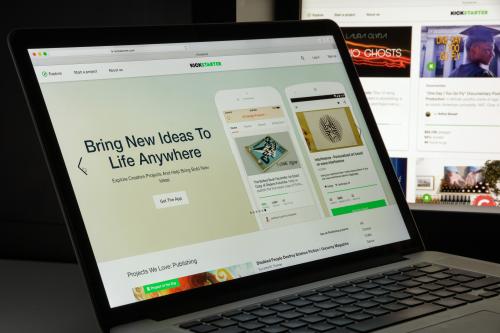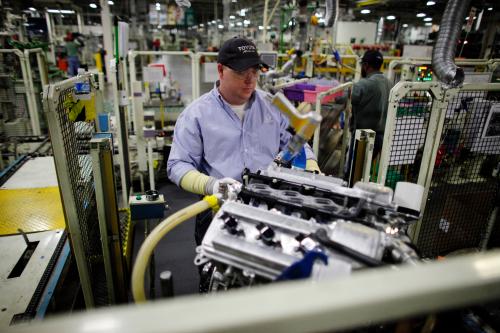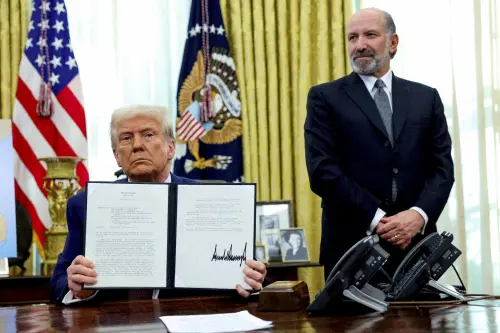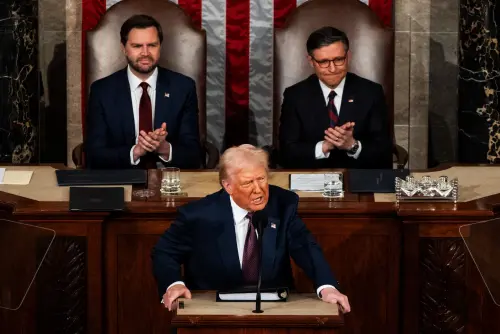Last month, Sen. Marco Rubio convened a reauthorization hearing for the Small Business Innovation Research (SBIR) and Small Business Technology Transfer (STTR) programs, which he described as “programs that provide needed investment in America’s most innovative small businesses.”
Indeed, these rarely discussed programs are a critical component of the nation’s effort to reignite lagging business dynamism. SBIR/SSTR grants are designed to stimulate the commercialization of technological innovation via small businesses, or companies with fewer than 500 employees.
Research shows SBIR/STTR grants play a critical role in translating research and development (R&D) into commercially successful companies that would not happen otherwise. As Joseph Shepard and John Williams, the current Small Business Administration (SBA) Associate Administrator and the SBA Director of Innovation and Technology, respectively, stated in their testimony, “The SBIR/STTR program provides approximately $3.5 billion per year in funding to small businesses, making it the largest single source of non-dilutive, early-stage, high-risk funding.”
Raising seed funding from traditional venture capital investors has gotten more difficult in recent years, especially for startups outside traditional tech hubs and those with female or minority founders. By contrast, SBIR/STTR funding is subject to a clear mandate in the Small Business Act to support the participation of women, socially/economically disadvantaged individuals, and small businesses in underrepresented areas, typically rural states.
SBIR/STTR grants could, in theory, provide critical initial investment for many communities outside the large investment hubs and/or disadvantaged high-tech entrepreneurs who struggle to access private capital. But is America’s Seed Fund meeting these goals, in practice? To answer this question, we explored the distribution of grant awards from 2005 to 2017 using the SBIR/STTR award database.
The SBIR/STTR program invests in more diverse communities than private venture capital.
SBIR/STTR funds reach a much wider set of U.S. communities than traditional venture capital. Table 1 shows that the largest 100 metropolitan areas captured 78% of total SBIR/STTR funding, and smaller metropolitan areas received another 19%. Micropolitan and rural areas received a little over 3% of all SBIR/STTR funds. As a comparison, more than 80% of private venture capital investment in 2017 landed in five metropolitan areas (San Francisco, New York, Boston, San Jose, and Los Angeles).
Of course, larger metro areas have more people and companies to attract investment. Controlling for the size of regional economies, smaller metro areas punch above their weight. On average, smaller metro areas, those with populations between 50,000 and 500,000 people, receive 16% more funding per 1,000 workers than the largest 100 metro areas. This result is largely driven by college towns or military bases such as Boulder, Colo., Ithaca, N.Y., State College, Pa., Blacksburg, Va., and Huntsville, Ala.

Female and minority-owned business owners remain underrepresented in SBIR/SSTR awards.
The SBIR/STTR program’s record supporting diverse founders remains subpar. The federal government tracks if an awarded business is owned by a woman or a person from a socially disadvantaged group.[1] The percentage of SBIR/STTR grants awarded to female business owners rose slightly between 2005 and 2017, from 8% to 11%, but the share awarded to socially or economically disadvantaged business owners remained essentially flat at 8%. These shares are considerably lower than female and minority shares of population and business owners generally (Figure 1). Private venture capital investors, on the other hand, have actually increased their investment in female-founded startups from 7% to 21% during the same period, although investment in black startups remains at 1%.

These patterns vary across metro areas, however. Female-owned companies received the highest share of SBIR/STTR grants (more than 20% from 2005 to 2017) in Colorado Springs, Colo., Gainesville, Fla., Providence, R.I., Orlando, Fla., and Boulder, Colo. In contrast, female-owned companies received less than 5% of grants in Houston, Madison, Wis., Dayton, Ohio, Seattle, and Worcester, Mass.
Lincoln, Neb., Oxnard, Calif., Burlington, Vt., Phoenix, Ariz., and Chattanooga, Tenn. are among the handful of places where the share of socially or economically disadvantaged SBIR/STTR awardees surpassed the region’s minority population share (Map 1). In Winston-Salem, N.C., Greenville-Anderson, S.C., Ogden-Clearfield, Utah, Rochester, N.Y., Detroit, and Portland, Ore., the minority share of SBIR/STTR awardees is less than one-tenth their share of total population.
Innovation-based economic development approaches must intentionally address the racial and gender inequities that are calcified into the innovation economy.
Further research will need to explore the source of demographic variation in SBIR/SSTR grant awards across communities. But it is clear that the way in which American entrepreneurs access public and private capital is powerfully shaped by who they are and where they live. Affirming this finding, recent research, led by Alex Bell and Raj Chetty, reveals that the U.S. economy draws on a relatively narrow slice of its population to fuel new innovations. Bell and Chetty argue that including more talented young people from a more diverse range of communities, genders and ethnicities in the innovation economy is not only socially just, but has great potential to expand the nation’s overall rate of innovation.
The SBIR/SSTR program is not the only tool available to boost innovation by closing disparities in access to seed capital. In 2010, the SBA launched the Federal and State Technology (FAST) Partnership Program. This on-ramp program offers one-year funding to local economic development organizations, incubators, universities and small business centers to support services for structurally disadvantaged business owners that help connect them to SBIR/STTR programs. But it only provides about $3 million in support per year.
Local and state leaders clearly have a role to play as well, both related to the SBIR/SSTR program and beyond. Launch Tennessee, a state SBIR/STTR grant matching apparatus, offers a higher matching rate for companies located in Opportunity Zones, and those owned by women, minorities, veterans and people with disabilities. Further upstream, countless local innovators are working to build more inclusive entrepreneurship networks in America’s cities. One of the most ambitious is Opportunity Hub, led by founder and Brookings nonresident senior fellow Rodney Sampson. Through a series of partnerships with incubators, coding schools, municipalities and tech companies, Opportunity Hub has built a network that engages 15,000 individuals in an effort to build multi-generational wealth in black communities through high-growth entrepreneurship.
Matching these robust, diverse entrepreneurship networks with federal investment is a critical step to ensuring America’s venture arm seeds inclusive opportunity.
[1] We exclude from the analysis the 5.8% of companies that did not report demographics of the owner, which amounts to 5.2% of total funding. A woman-owned small business is defined as one that is at least 51% owned and controlled by one more or women. A socially and economically disadvantaged small business is one that is 51% or more owned by a one or more disadvantaged persons, which is defined as a member of any of the following groups: black Americans, Hispanic Americans, Native Americans, Asian-Pacific Americans, Subcontinent Asian Americans, other groups designated from time to time by the Small Business Administration (SBA) to be socially disadvantaged, and any other individual found to be socially and economically disadvantaged by SBA pursuant to Section 8(a) of the Small Business Act, 15 U.S.C. ; 637(a). For more information on this definition, contact the SBA.
The Brookings Institution is committed to quality, independence, and impact.
We are supported by a diverse array of funders. In line with our values and policies, each Brookings publication represents the sole views of its author(s).









Commentary
Is America’s Seed Fund investing in women- and minority-owned businesses?
June 4, 2019